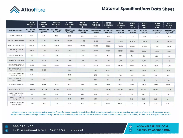

Phenolic is an industrial laminate with many applications and formulations based on its materials and specific properties. It has multiple uses in manufacturing electronics and fabricating parts. Atlas Fibre has a wide selection of phenolic materials available, including glass, canvas, linen, and paper. Learn more about the many uses and benefits of phenolic composites.
Phenolic material is a composite material produced when layers of fabric are coated with phenolic resin, heated, and put under high pressure. The phenolic resin consists of formaldehyde and phenol, which are bonded together into large molecules. Phenolic material is incredibly strong and durable but weighs much less than even the lightest metals. It’s often used in place of metal, where manufacturers need a lightweight solution.
Phenolic is often called the first plastic as Bakelite, the first commercial synthetic resin was made from phenolic. It’s a type of thermoset plastic, meaning that its shape is set once the material has been formed, heated, and cooled.
The applications for phenolic composite depend on the type of material. G-3, or glass phenolic, is best for applications that require low thermal expansion and high heat resistance. Since it’s corrosion-resistant, it’s often used to fabricate acid-resistant parts. Some uses for glass phenolic include:
Paper-based phenolic composite is better suited for applications that don’t require high heat resistance, such as:
Linen and canvas phenolic composite materials are ideal for use in the fabrication of:
Which type of phenolic composite will work best for your project? We can help you decide. Atlas Fibre is North America’s leading supplier of thermoset composite laminate materials. We have more than $8 million worth of inventory in stock at our warehouse in Illinois. We’re also a resource center and are dedicated to helping our customers find the right material options. Contact us today for a quote and to learn more.
Contact Us